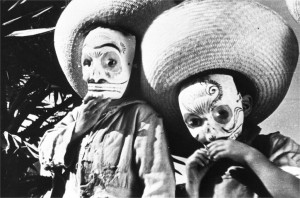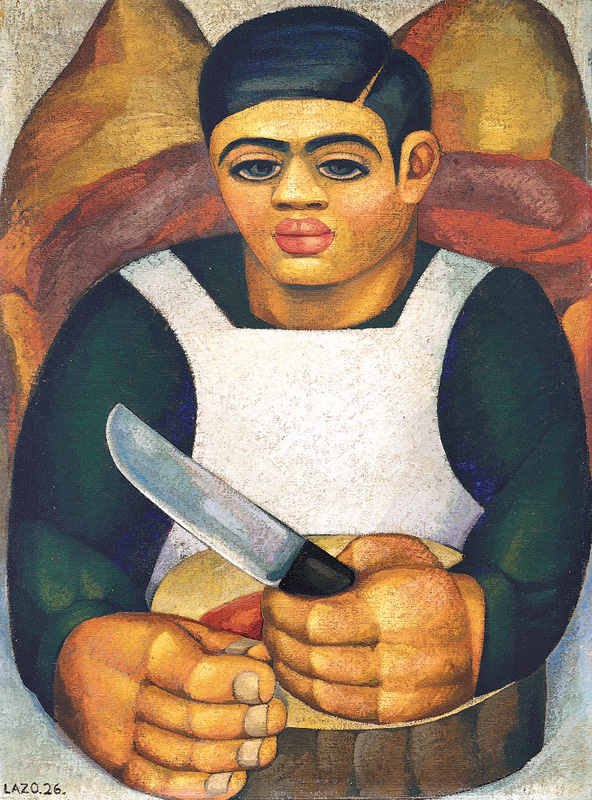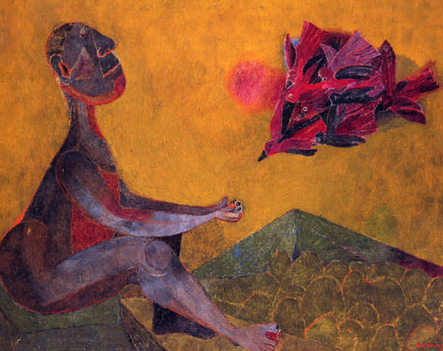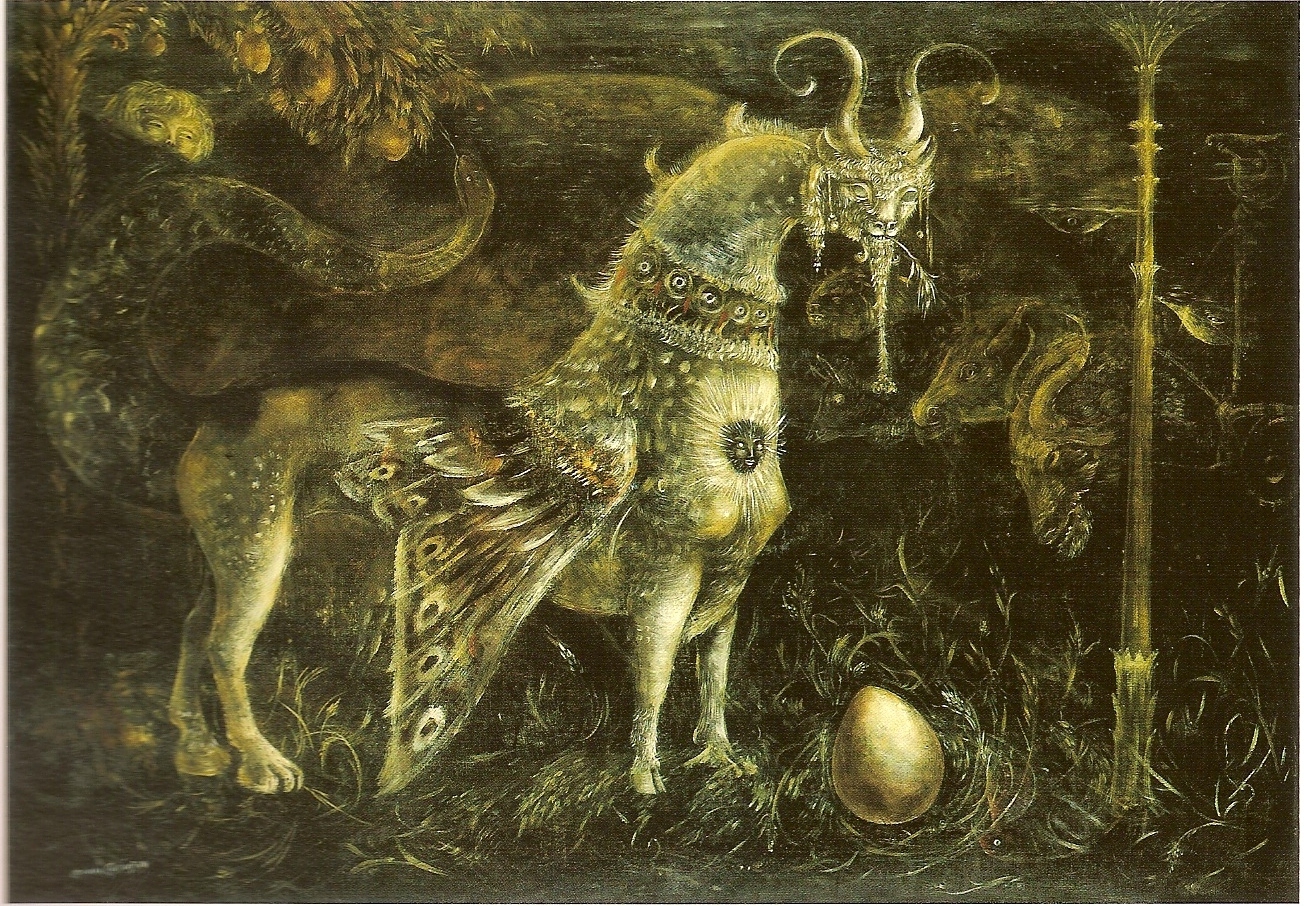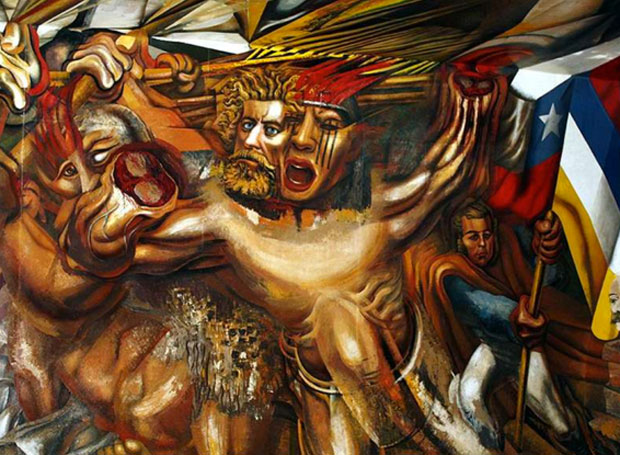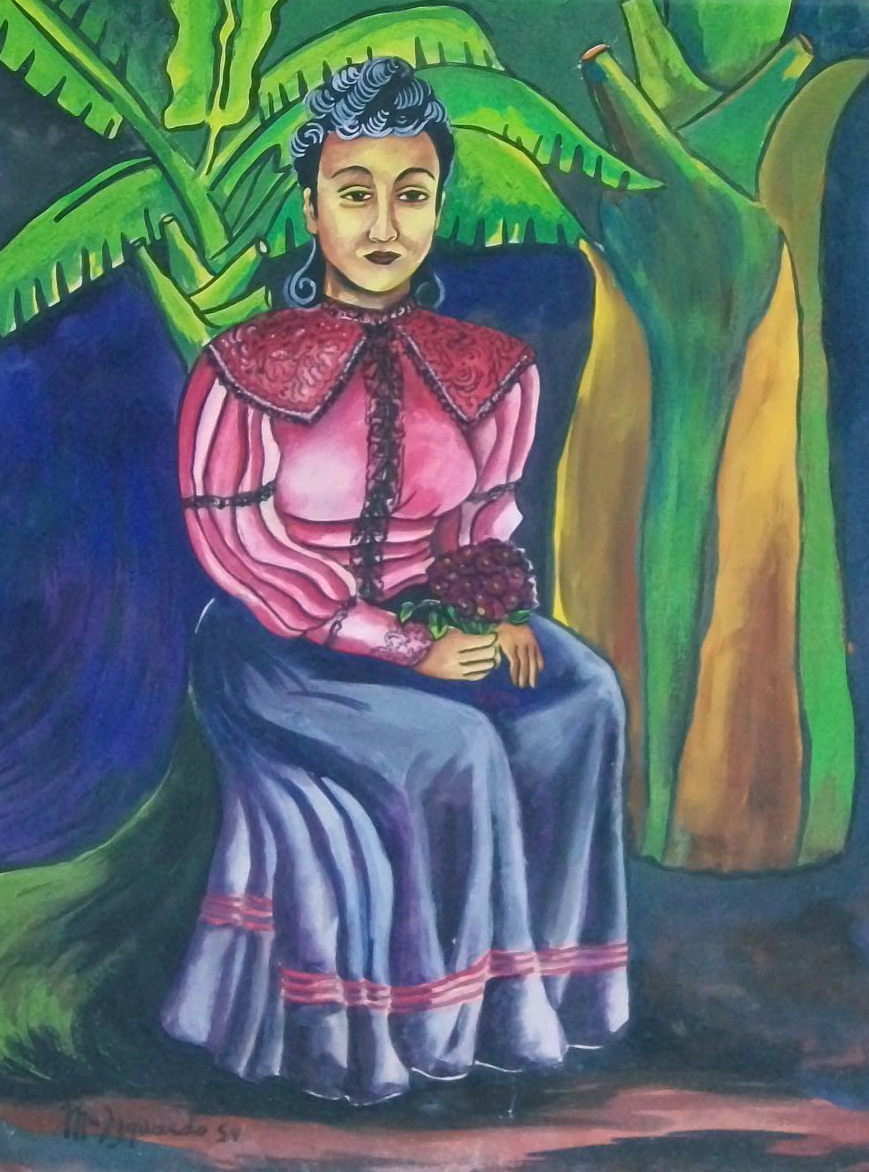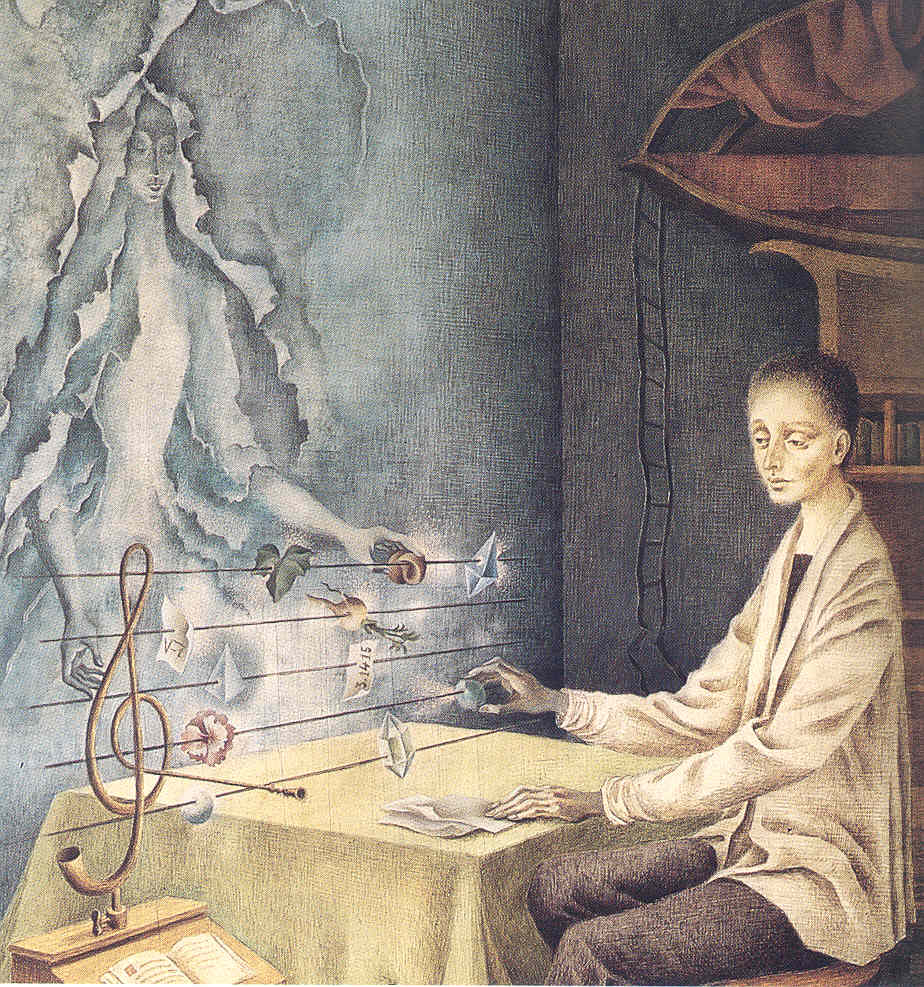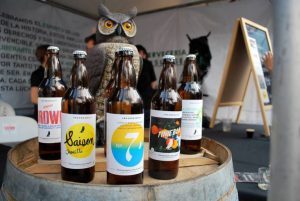Surrealism in Mexico goes back a long way. Above: Eisenstein’s ¡Que viva México!, begun in 1930.
“I don’t know why I came here. Mexico is the most surrealist country in the world.”
– André Breton
In the tumult of understanding the 20th century, the English speaking world has developed “stylistic movements” as a way of categorizing and systematizing a world it has quickly begun to forget. It is understood that DADA, a decidedly pacificist and anti-war movement, led directly to an even more resistant stance in the surrealism that took root even as the Paris Peace Talks of 1919 were underway.
Some historians have recalled that the Mexican Revolution began even earlier – and carried on far longer than World War I. In the same struggle to make sense of so much violence on both sides of the Atlantic, it is often forgotten that both DADA, and later surrealism, are more than responses to war. Surrealism is also understood as a response to horror and to violent upheaval the likes of which few of us can understand today.
When André Breton arrived in Veracruz 1938, the last battle of the Cristero War was only nine years in the past. A staunchly socialist Mexican president was facing down an entrenched Catholic church, whose members continued to torture and murder supposedly socialist school teachers even until 1940. And of course, refugees from the radically Catholic Franco regime in Spain were streaming into Mexico.
The recipient of a cultural commision from the French government to attend a conference at UNAM on Surrealism, Breton also set out to meet and befriend Leon Trotsky and ended up in close contact Mexican intellectuals and artists, among them, Diego Rivera, Frida Kahlo, Octavio Paz and Manuel Alvarez Bravo. With Trotsky, Breton authored “Pour un art révolutionnaire indépendent,” though even today the co-author is often listed as having been Diego Rivera and not Trotsky.
Breton’s visit to Mexico marked an awakening in Mexico’s understanding of itself. International visitors wonder sometimes at the hold surrealism still seems to maintain on Mexico’s cultural, popular and intellectual views of itself. But in any record of the great North American, Italian and German cultural current, surrealism is often interrupted – if not stopped – by Jackson Pollack’s evolution into a total, though psychologically (surreally) inspired, abstractionist.
One could follow a parallel line – in Diego Rivera’s path toward a later obscured socialist realism, and Frida Kahlo’s evolution from surrealist into international post-modern identity-politics heroine. But however they are later characterized, neither Diego nor Frida suffered a break with surrealism in the that way it is experienced in the Anglo-Mundo – or in the broader current of Euro-American visual arts. Indeed, surrealism lives on in Mexico, as it does in perhaps few other countries around the world.
Beyond Frida and Diego, these are some of the most important Mexican artists touched in one way or another, by surrealism.
Agustín Lazo Adalid, 1896 – 1971
Credited with introducing surrealism to Mexico, Lazo was a set designer, playwright and painter who spent much of the 1920s in Europe. Widely recognized in his own time, Lazo become part of the Grupo sin grupo – “the group without a group,” where he brought the influence of European painting, especially that of Italian, Giorgio de Chirico, into broader recognition of his contemporaries.
Rufino Tamayo, 1899 – 1991
In these pages we often remark on the sometimes startling relationship between 20th century ideas of modernism and the pre-Hispanic past in Mexico. This could be stretched to the point of drawing truly absurd connections. But sometimes, certain artists really do arrive on the modern art stage bearing bonafide non-Western credentials. None of Picasso’s imitating “primitive” art, Tamayo was raised in a Zapotec community in Oaxaca. His work, and his own ambition made him important in Mexico and in New York. And the surreal is never far from the surface and never entirely put to rest.
Leonora Carrington, 1917 – 2011
A naturalized Mexican, born British and with a story as interesting as anything on the continent, Carrington brought her Euro-surrealism to Mexico. A master of her own unique graphic language, she drew from Celtic mythology, alchemy, Kabbalah and Buddhism, and her work made a distinctive contribution to Mexican art. Though she was never heard of again in Europe, this may have actually had more to do with her British origins than with her considerable talent.
David Alfaro Siqueiros, 1896 – 1974
One of the great political muralists, Siqueiros is today mostly badly misunderstood as some kind of graphic designer who drew a lot of lines on buildings. His best work is less obvious and combines surrealism and cubism – often with that distinctive bright feeling of someone who really knows his paint. Sometimes credited with having taught “drip and pour” techniques to a young Jackson Pollack while in New York, Siquieros is essential to understanding the mid-century in Mexico and a particular devotion to surrealism in design and applied arts.
Maria Izquierdo, 1902 – 1955
Guadalajara born, Izquierdo was the first Mexican woman to exhibit in the United States. Although she never adopted the term for herself, the surrealism of her paintings is in the odd juxtapostions and combinations of objects in eerie altar piece paintings and still-lifes. Very successful during her lifetime, she concentrated on traditional Mexican themes and subject matter – somehow making her work that much more surreal.
Remedios Varo, 1908 – 1963
One of the most fortunate of the exhiles from Franco’s Spain, surrealist painter Varo picked up surrealism in Paris – at the height of its European run. Forced from Spain by the German occupation she arrived in Mexico City in 1941 after fruitful years among many of the most important figures on the scene, including Breton, Carrington and Max Ernst. Thematicly involved with journeys and alchemical dream worlds, her work is touched by a unique sensitivity and often feminine delicacy, but this belies something of the political leanings and actual feminism that was clearly developing in the works of here final years.
ILUMINA is an interactive sculpture of light and sound fed by the collective energy of people’s hearts.
Art and technology are two faces of human creativity, two that are also closely related, despite the differences they apparently have with each other. What art does on many occasions has been achieved thanks to a specific technical development, a technology whose existence allows the artists to enhance or limit their creative work. Yes, it conditions it, but possibly also encourages it to transcend those limitations.
In this sense, the relationship between one and another human activities could be found in virtually any era, but it is certainly in recent times when technology has a presence, so persistent, somehow so inescapable, that art has been benefited for incorporating it. Both as a resource, an instrument, as part of the examination of contemporary reality, when many of our practices and interactions almost necessarily pass through a technological device.
Thus, somehow the ideal professed by Nietzsche on the need to transform life in a work of art, but this time through art and technology. Somehow the aesthetic sensibility, the discovery of the admirable or the frankly beautiful that any of us can perceive, finds a vehicle, a means of transmission and expression in how art can be magnified through technology.
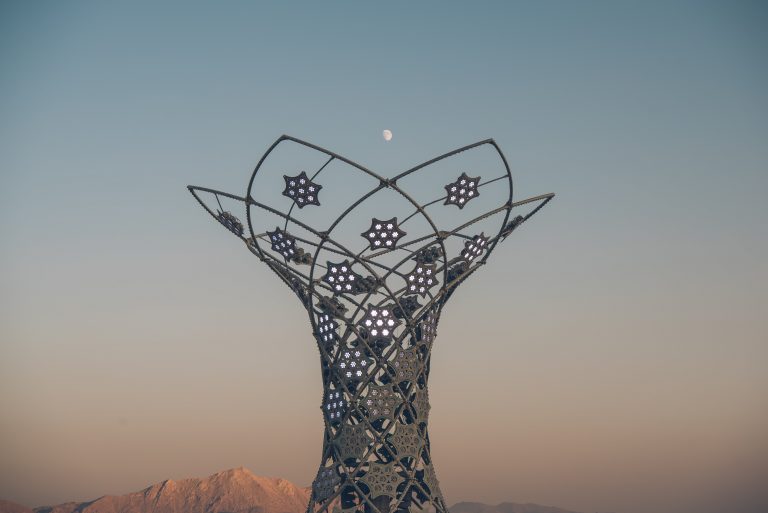

Nowadays, it is becoming more and more complex to achieve high levels of consciousness, and to create a community without being outside of technology, but ww can use it as a tool to improve our sensitive abilities. To the same extent that we depend on technology to survive, it has become part of our lives, even in its most spiritual and even transcendental recesses. Art, now more than ever, demands to be a vehicle to explore different states that bring us closer to the dimensions of the infinite
Ilumina is an installation created by the artist Pablo Gonzalez Vargas, who through a deep exploration with the power of interconnectivity, proposes a method to improve the energy field of the planet. Pablo Gonzalez created a majestic interactive sculpture of light and sound that is activated by the emotional states of people, generating a beautiful light show and a sound landscape where the participants enter a state of coherence and deep harmony with themselves and with each other.
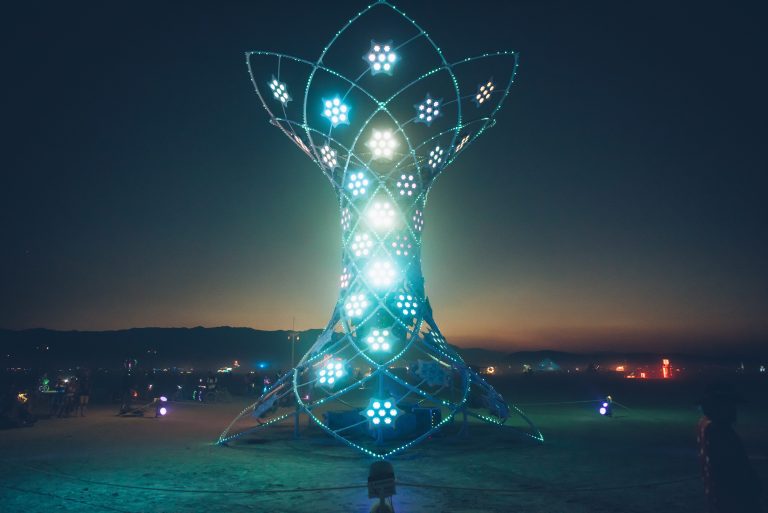

Ilumina is a metallic art monument, completed with aluminum and LED lights that together form an architectural piece full of harmony. The piece of art combines technology with a design of ancient wisdom. Ilumina has a program that responds to external stimuli, being able to shine more while more “coherent” is the group that hosts, generating a unique shared experience.
Ilumina is a chilling visual experience, and the volunteers who participate in the exercise of meditative immersion that lasts three minutes, are transported to a state of coherence and deep harmony with themselves, with their fellow participants and with the cosmos through a patented fusion of modern technology and transpersonal art.
The biometric sensors are connected to the ear lobes of each participant, which measures their unique state of coherence and averages them together. This is how lighting design and moving soundscapes respond to a unique algorithm, a product of HeartMath that uses biometric sensors for personal self-training in the regulation of emotional states where the sculpture becomes brighter to the extent that the users experiment with their emotions.
The team that created Ilumina included about 20 people from different disciplines and contributions. There was a large industrial design team that shaped the exact model that was taken to manufacturing. Marco Kalach worked with an expert manufacturing workshop, because as it is a public use facility in particular events, it had to comply with all the rules, structural regulations and with protection codes. The executive producer of the project was Gaby Vargas, who was responsible for the expertise at HeartMath, and joined by mexican musicians and audio engineers to make the experience of 360 degrees of immersive sound, led by Billy Mendez. The lighting team, directed by Paolo Montiel, coordinated all the programming and lighting design that makes symbiosis with the audio.
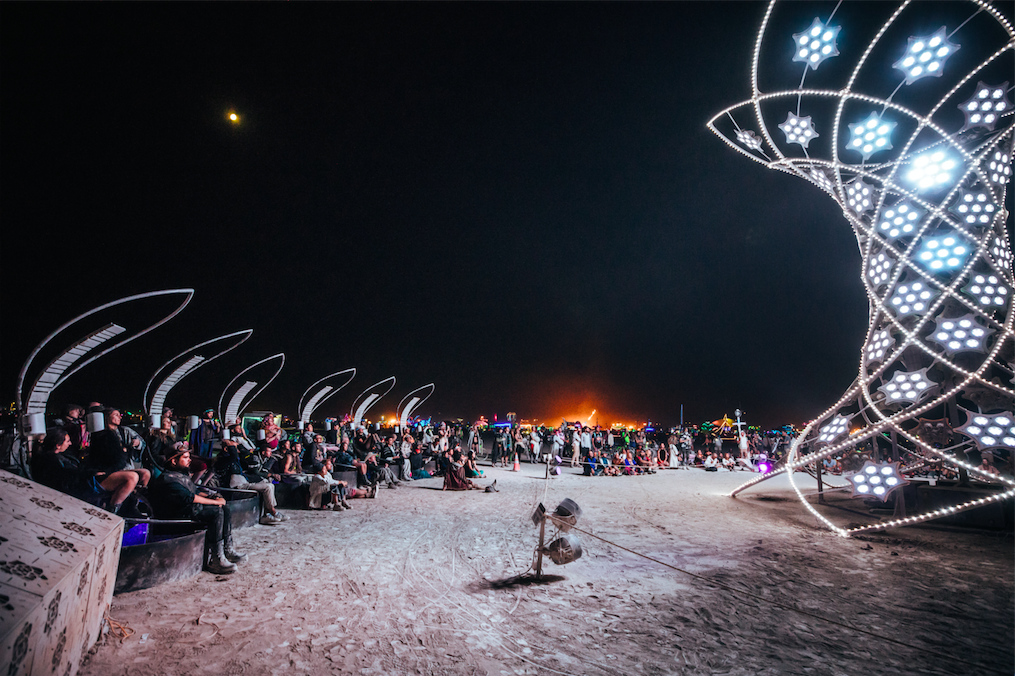
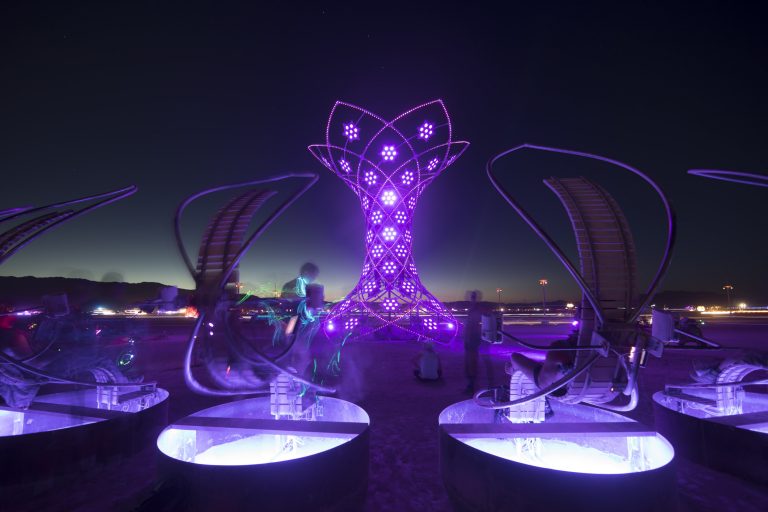
It was at Burning Man 2012, where Pablo Gonzalez Vargas created an art car called Mayan Warrior: a luminescence project and a spectacular audio show featuring pieces by the artist Alex Gray and musical performances by elite artists from Mexico and around the world.
In the penultimate edition of Burning Man, Pablo Gonzalez and his team decided to go a step beyond the great proposal that is Mayan Warrior, by presenting Ilumina, this piece of sacred geometry that radiates not only light but an algorithmic sacrality, it’s as mystical and hypnotic as an art piece can get. The tower of almost 12 meters high illuminated the Nevada desert at the Burning Man Festival 2017, and users managed to enter a mental state full of concentration characterized by a complete absorption, a wonderful moment of loss of the notion of spacetime.
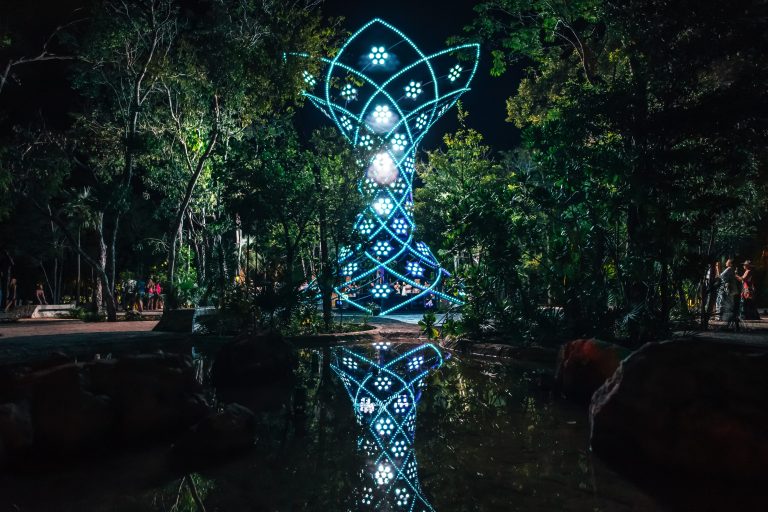
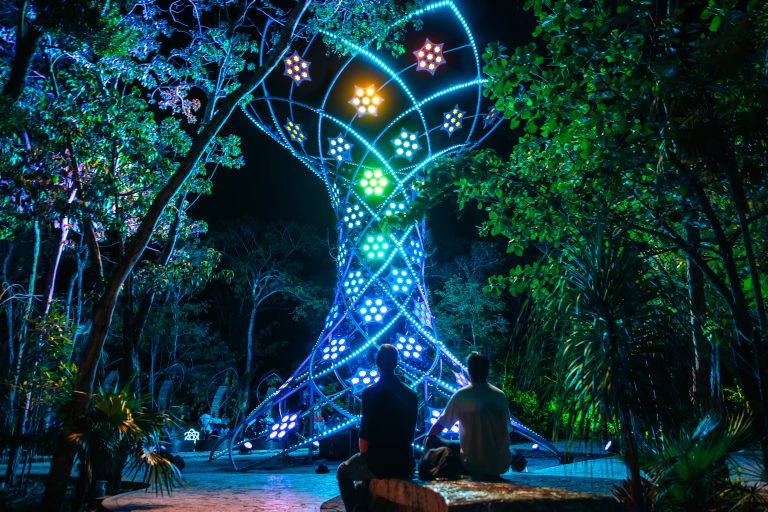
It is expected that later there will be replicas of these sculptures, so that they can reach new locations around the world, and we can experience this amazing spectacle of light and the soundscape that connects us with the profound mysticism that exists in ourselves and that highlights the interconnectivity of our planet with the global energy fields.
Here are some photos of this beautiful project, in which lies the probability of a coherent and luminous future that would be worth living.

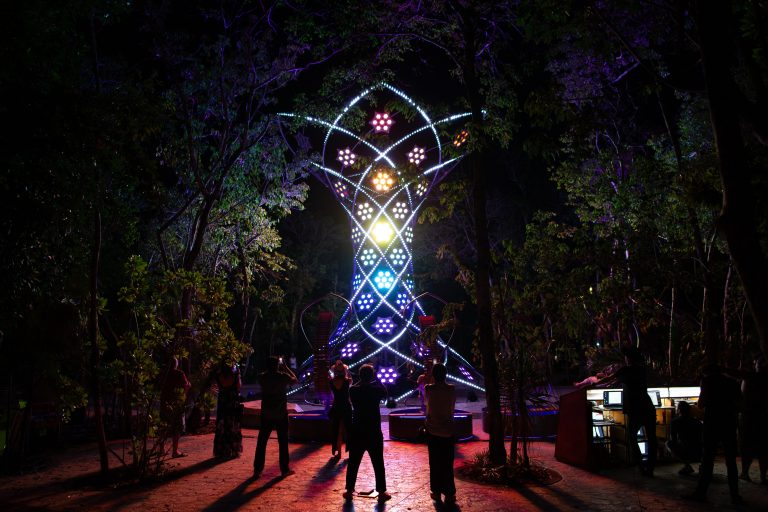

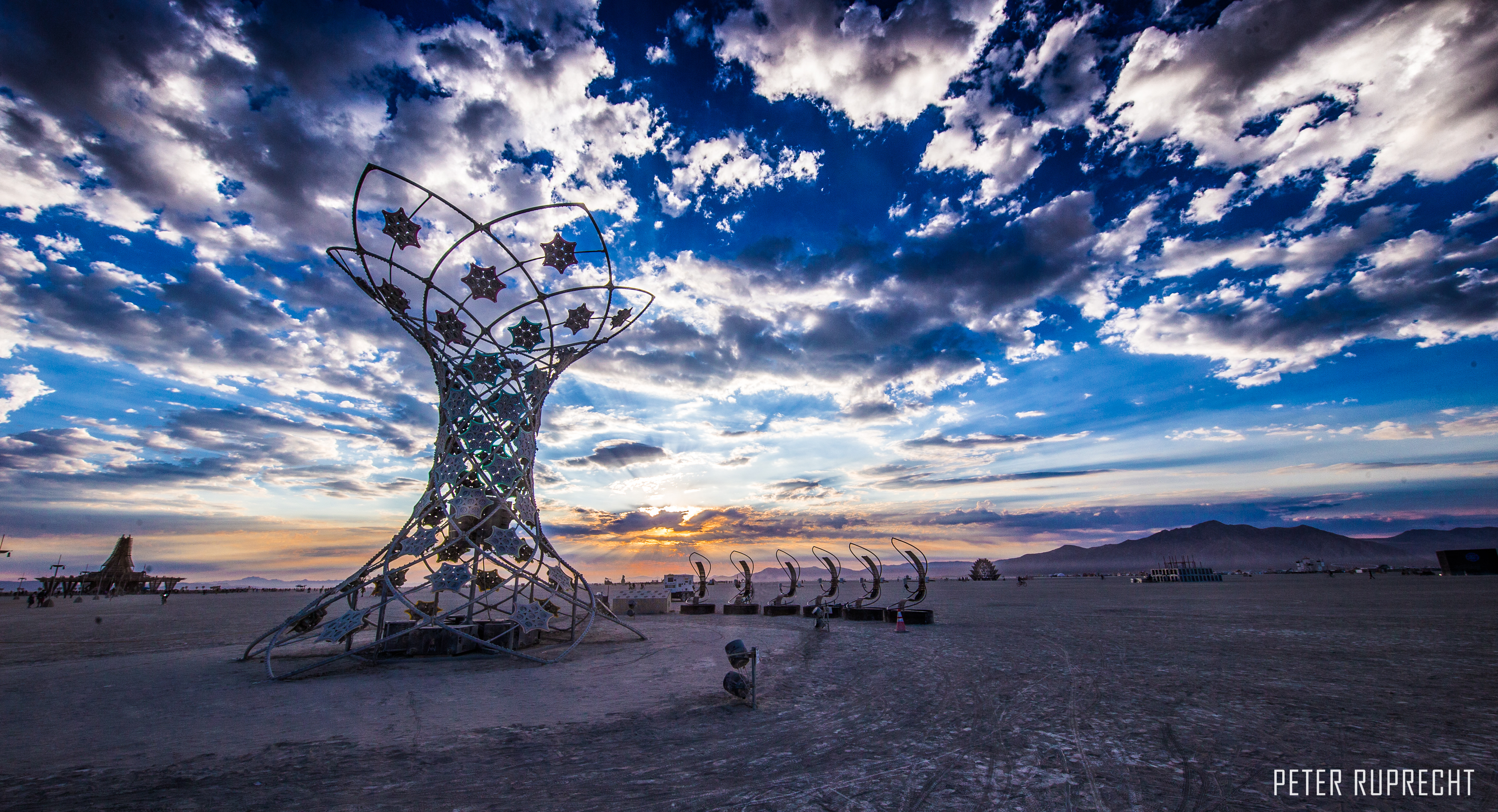
If you want to know more about this beautiful project or about the creative artist and allies that integrate it, visit their social media channels:
Ilumina Art Installation
Sitio web // Facebook // Instagram
Chilangos may cherish their reputation for never reading, but Mexico City libraries present a very contrary picture.
Though the internet makes lots more information available to lots more people, Mexico City libraries have simply not been supplanted. Charged with continually re-inventing themselves, and their places in the public imagination, one can still encounter eras gone by and great historical minds in a library as in few other places.
Knowledge, after all, belongs to everyone. Opening a book, reading it at a study, or just meeting in the silence of one these Mexico City libraries enhances concentration, and provides a welcome respite from everything going on out there in the world.
Of all Mexico City libraries, the oldest were part of the church and one or another of its offshoot organizations. Among these was the Colegio de Santa Cruz de Tlatelolco, founded in the 1530s and surviving today as the Biblioteca José María Lafragua. Most of these ecclesiastical libraries were not truly open to the public, and Mexico had to wait for the National Library of Mexico, inaugurated by Benito Juárez in 1867 to enjoy the benefits of a truly public library system.
The list below is intended to let you enjoy some of that system, too.
José Vasconcelos Library
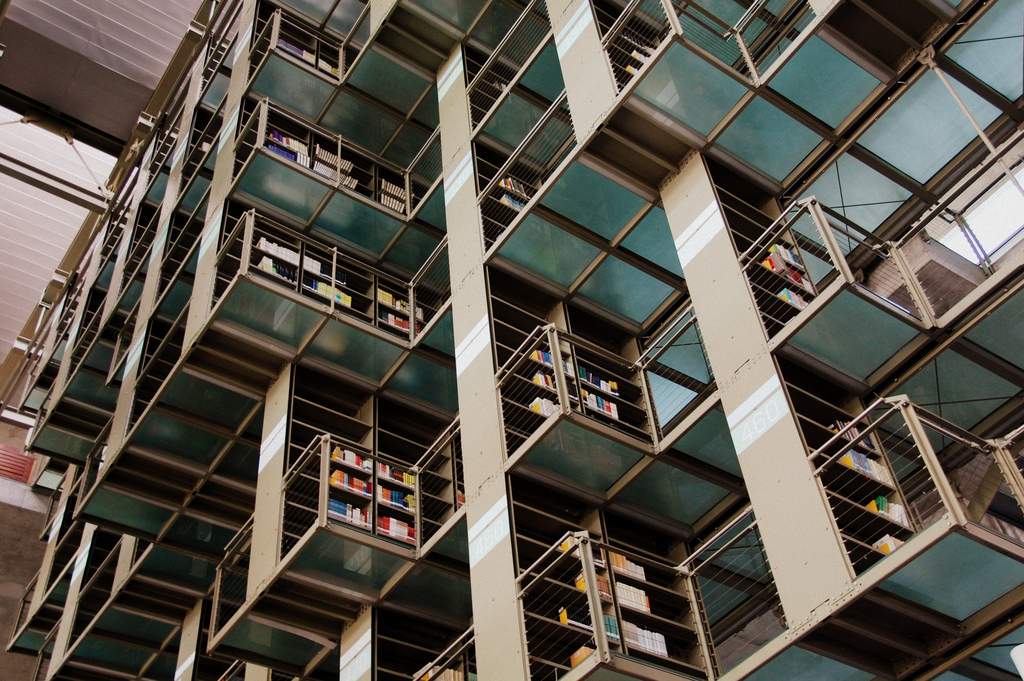
Opened just ten years ago, in 2006, the Vasconcelos is visited by thousands for the sheer spectacle of its innovative design. Graced by the iconic whale from artist, Gabriel Orozco, it’s always a good library for art and visual spectacle. The facade retains something of a colonial appearance, but for sheer scale, and jaw-dropping space, the interior must be experienced.
Address: Eje 1 Norte Mosqueta S / N, Buenavista
Website
UNAM Central Library
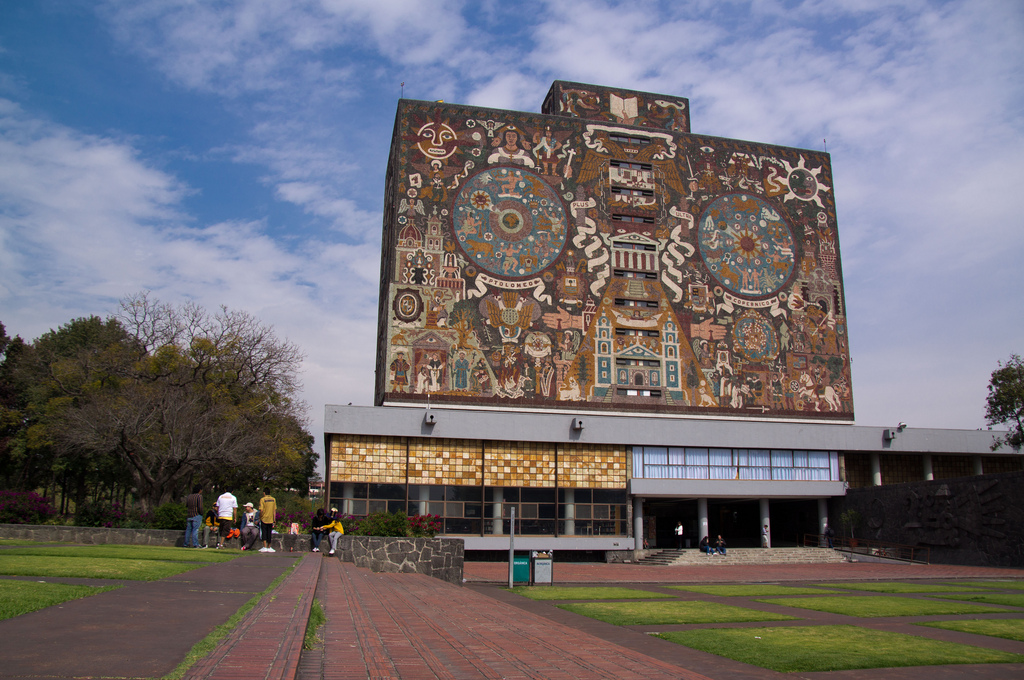
We’ve written a lot about it in these pages, but the UNAM library with the Juan O’Gorman murals remains one of the most outstanding of all Mexico City libraries. As a UNESCO site with some 428,000 volumes in the collection, it’s the biggest in Mexico, but lots of folks visit just to see the facade and the surrounding grounds.
Address: Circuito Interior S / N, Coyoacán, Ciudad Universitaria
Website
National Library of Mexico
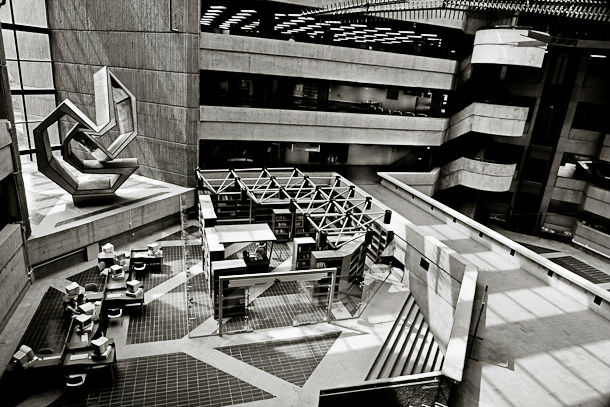
Opened by Benito Juárez in 1867, there’s still a good one million books inside, today administered by the folks from UNAM. Originally located in the San Agustín church in the city center, the current building was opened in 1979. Geometric, and massive, it’s an extraordinary place to visit.
Address: Av. Universidad 3000, Coyocacan
Website
Miguel Lerdo de Tejada Library
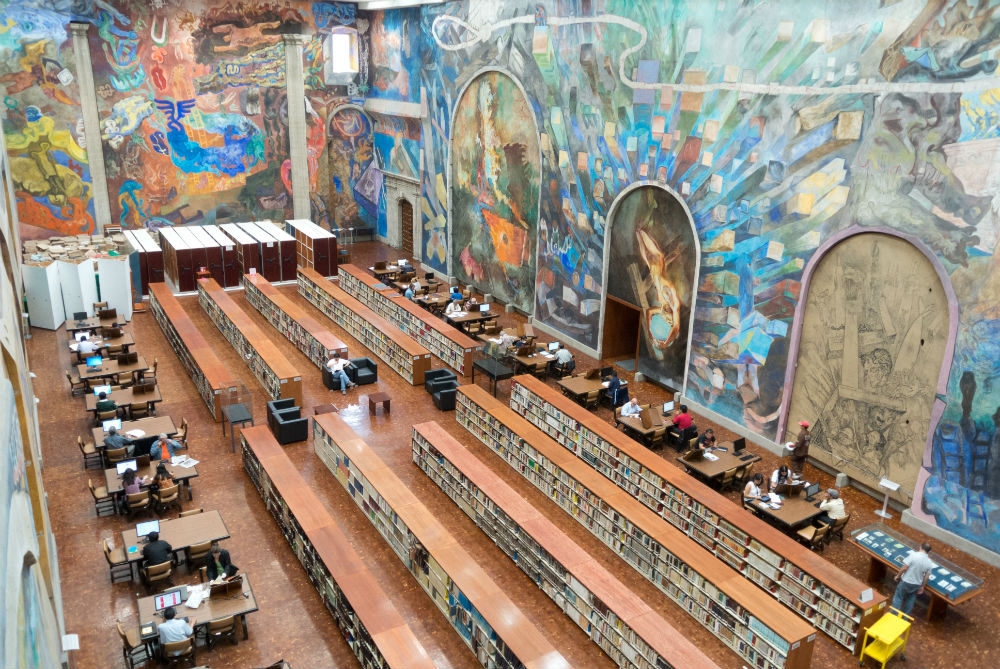
Specializing in economic materials, this collection of some 86,350 books and 114,852 journals is administered by the Secretary of Finance and Public Credit. Founded in 1928, it’s one of the cities true public art spectacles. Inside the main nave of the old Oratory of San Felipe Neri “El Nuevo,” the baroque façade outside is just the beginning. Inside, the murals are futuristic, and not to be missed.
Address: Av. República de el Salvador 49, Centro Histórico, col. Centro Histórico
Library of Congress of the Union
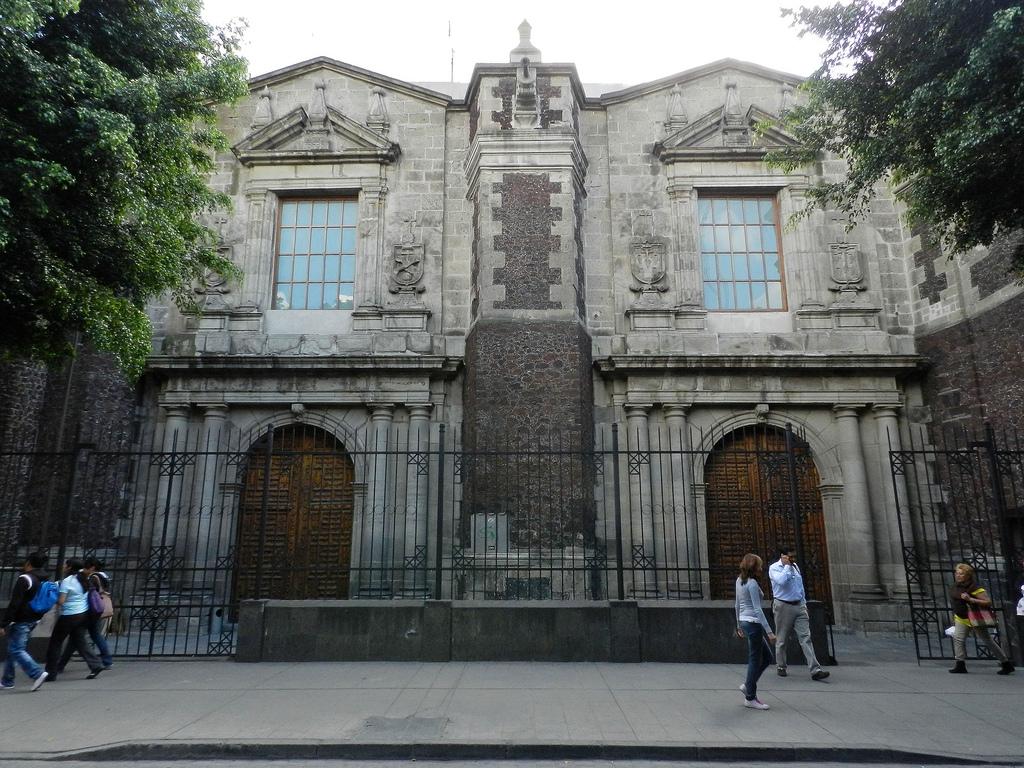
One of Centro’s truly outstanding historical buildings, for centuries it was the convent of the Clarisas from the 16th century. Today it’s something like a “Library of Congress” with a stunning collection of publications and artifacts, but also with a lush, deep, dark intellectual interior, that beckons from centuries past.
Address: Tacuba 29, Centro Histórico
Photographs this page: Flickr – Creative Commons
